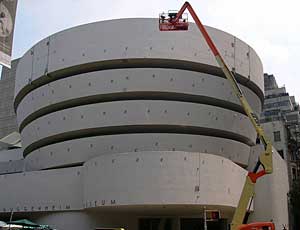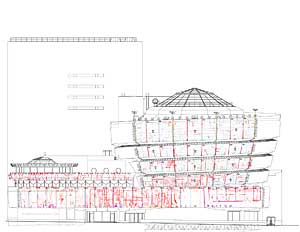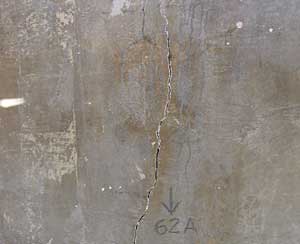Frank Lloyd Wright pushed the limitations of technology with his buildings, sometimes pushing past them and bequeathing problems to future stewards. Fallingwater, the Edgar J. Kaufmann Sr. residence completed in 1939, required a major restoration in 2002. The house’s dramatic cantilevers had deflected dangerously with the main cantilever sagging an alarming seven inches. The restoration team, including structural engineer Robert Silman Associates (RSA) and architect WASA/Studio A were able to halt, but not correct, the deflection with post-tensioning cables—a solution as innovative as Wright’s design.



RSA and WASA/Studio A—formerly Wank Adams Slavin Associates—have partnered again, along with Integrated Conservation Resources, to repair and restore another Wright icon, the Solomon R. Guggenheim Museum in New York City. For two years, the team has undertaken a comprehensive investigation and assessment of the 50-year-old exterior and its infrastructure, focusing on the gunite-covered concrete envelope. An earlier effort completed in 1992, led by Gwathmey Siegel and Associates Architects, had focused on the museum’s interior.
The restoration team removed 11 coats of paint from the exterior, revealing hundreds of surface cracks. With the paint removed, a 17-month monitoring effort began, which measured localized movements of cracks and overall wall movements. Laser modeling and core drilling to gather concrete samples showed that the building remains structurally solid. After extensive laboratory and accelerated weathering testing, mockups of proposed crack fillers and patching materials were monitored through seasonal changes to verify compatibility and performance.
Wright, never one to be shackled by convention, designed the structure without expansion joints in order to create a visually monolithic form. And yet, despite the cracks, the concrete was found to be in remarkably good condition. Credit for this stamina goes to the use of an early version of what is now called elastomeric wall coating—a thick, elastic paint—in its infancy in the 1950s, but its use is a perfect example of Wright’s continuous search for new methods and materials. The restored facade will be coated with a high-performance contemporary elastomeric paint.
The restoration team’s biggest challenge centers on the interior side of the envelope at the top of the rotunda. The wall of the sixth ramp is twice the height of the spiral’s lower ramps and has a different slope. A thorough investigation showed that a difference in geometry meant that the top walls expanded and contracted at different rates. The engineers designed custom steel brackets to reinforce localized discontinuities and applied a carbon-fiber matrix to the interior side of the walls to provide resistance to thermal and wind loads.
In restoring any architectural icon, the goal is preserve the authenticity of craftsmanship and to make sure the intervention doesn’t preclude future restoration. “We strive to make our interventions reversible, but because of the scale of buildings, that is not always possible,” explains Pamela Jerome, AIA, a partner at WASA. “Therefore, if we cannot achieve reversibility, we at least make sure that our interventions do not preclude re-treatment.”
The total budget for the restoration is $29 million. Scaffolding will remain in place through spring 2008. The museum is expected to remain open throughout the restoration process.

Post a comment to this article
Report Abusive Comment